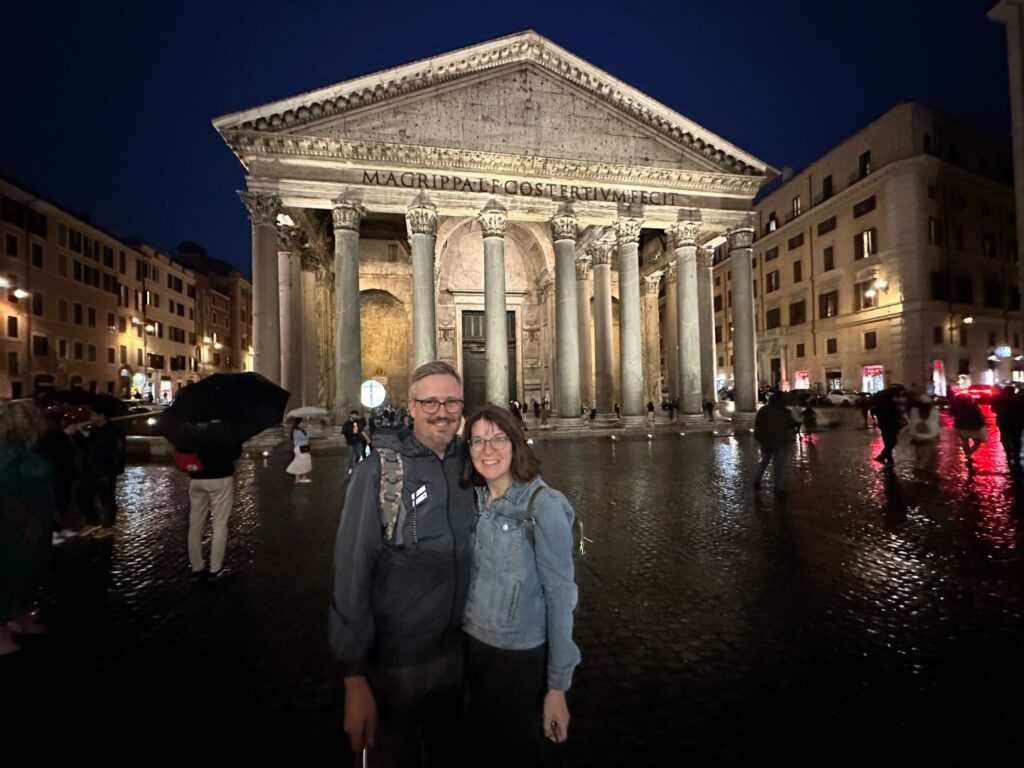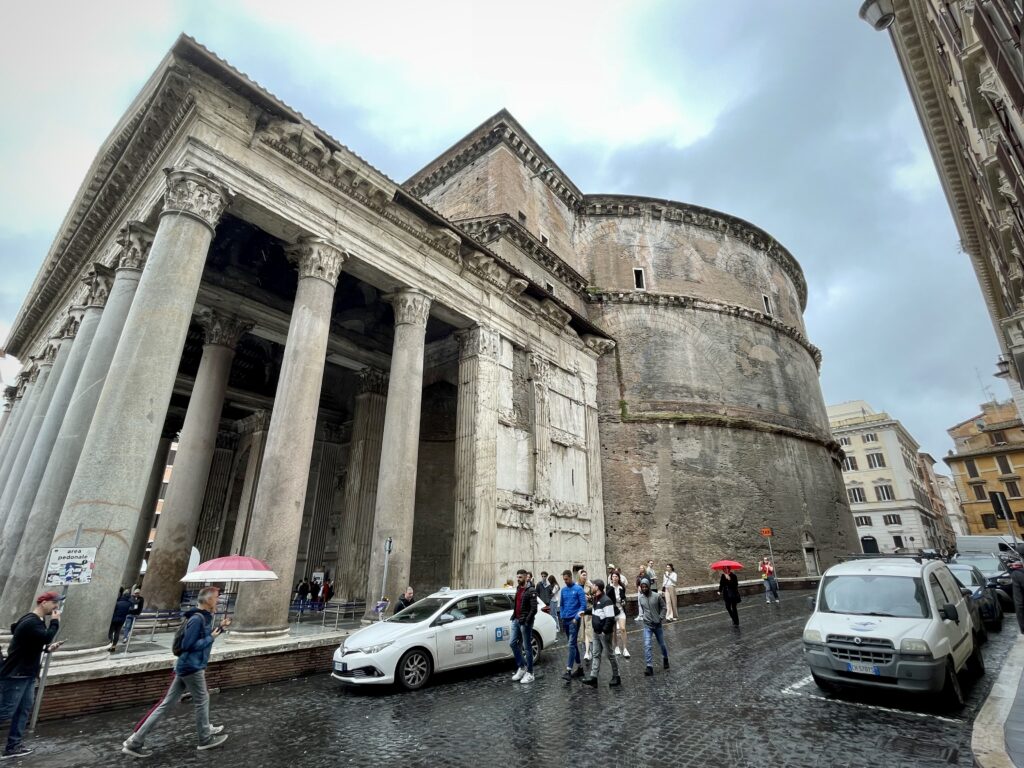"Let them construct a sanctuary for Me, that I may dwell among them." (Exodus 25:9 NASB1995)
We visited the Pantheon weeks ago, yet it still sits squarely in my mind. The architectural feat continues to take up an unreasonable amount of my mental real estate! If you’ve ever seen it, you know what I mean; this ancient, stately structure leaves a powerful impression!

We actually visited twice. The first time, we found it in the dark, after it closed on our way to a trendy tiramisu place. It loomed out of the rainy cobblestones as a structure dropped in from another time. With the lights and reflection from the rain, it was magnificent, but closed for the evening. I nearly begged to back in the morning. I had to see it for myself; the unsupported concrete dome that has stood since the time of Christ. Turns out, it was worth the return trip!

Even walking in is an experience. The granite columns loom as you approach the oldest bronze door in the world; its original locking mechanism still in use. There are marble floors as far as you can see, but the dome demands you to look up, cranking your head back in shock over the light pouring in through the open oculus above.

The dome is as wide as it is high; like a room where a giant stored his marble. Even after two thousand years of prevailing elements, the structure is solid and stoic, time has lost it’s potency in this place. The inside is as expansive as the exterior is impressive. A handful of wooden pews are set up for slimly-attended services, but for the most part, the space is open and cavernous.

It had rained the night before, with the oculus wide-open to the clouds. The drains etched into the marble floor still bore the evidence of runoff, but no visible wear and tear from a couple millennia of weather.
The Pantheon was built to accommodate Roman gods. It’s believed that the idols were perched around the room and the building served as a one-stop-god-shop. Come in, take a quick turn and appease all the deities in one fell swoop. Even the name “Pantheon” – meaning ‘all the gods’ – is likely a nickname, not the formal title of the ancient structure. Our friend and tour guide explained how the building fell into disrepair after the collective conversion of Rome. It was abandoned as the Romans turned their hearts to Christianity. Several centuries passed until it was gifted by the Emperor to the Pope, who transformed it from a pagan temple into a a church. All the pagan pieces were removed, the building was redressed as a sanctuary, adding altars and apses, pressed into service and ultimately, saved from destruction.
So why am I still thinking about the Pantheon more than a month after our tour? It’s pretty simple, actually. Tabernacle. My word for the year rang true in that space, too. I felt a kinship with that antique structure because I was built for worship, also. And I do.
Much like the people who initially visited the Pantheon, I tend to line my life with idols. It’s the human condition, isn’t it? We all bow to wealth or status, entertainment and appetite, acceptance and so much more. These false gods rule our lives until we encounter the living Christ and we realize that deaf and mute carvings can do nothing for us. They are merely figments of our over-active imaginations, deployed by the enemy to steal worship from the One True God.
So like the Romans, we have to clear them out. But when we do, we must move something else in, and it’s not spiritual paraphernalia. It’s God’s presence.
Remember, the dome of the Pantheon never closes. The eye to heaven stretches 27 feet across: letting light and air and rain and snow fall freely into the building. Our temple must also remain open to heaven. We will have to work to keep this cavernous sanctuary space free from clutter and available to God’s presence. His holy occupation is the priority of our structure. While it’s tempting to drag lesser things in, stone and wood idols will never satisfy our soul like communion with the living God.
“Prayer is abandoning your place at the center of your world and daily surrendering that place to God alone as an act of worship.”
(Paul David Tripp)
We continually uproot ourselves and invite God to reign in the Pantheon of our souls. We surrender again and again to His presence and, in doing so, curb our cravings for anything less.

It might sound silly, but it seems like the Pantheon has stood for centuries because of its rededication to the rightful God. This singular focus has allowed it to remain through countless governments, occupations and desolations. The same is true for us: sanctifying ourselves to God’s presence, living as a designated tabernacle strengthens us for the reality of weather and world events. We remain standing as we continue to place all our hope and trust In Him.
"Thus I have seen You in the sanctuary, to see Your power and glory. Because Your lovingkindness is better than life, my lips will praise You." (Psalm 63:2 NASB1995)
Lord, today we recall that we were created for worship, and we see how we tend to drag idols into Your sanctuary. We repent of bowing to lesser entities. Please forgive us and give us a united heart with consecrated focus. Fill these sanctuaries with Your presence. Teach us to love You alone. Reserve this space for Your presence only. Amen.
Anna! Thanks for recalling the Pantheon to my memory. It left a strong impression on me at 17 years old. What I always think of is how when it was built there was a staircase leading UP to the entrance, but after centuries of mankind, the ground has built up to slope down. Not sure there is a metaphor there, but I am certainly taking yours to heart. I am leading our highschool seniors this year through ancient literature including all the gods they worshiped, I can’t wait to share this with them!
Hannah, I had completely missed that about the staircase, I was so enamored with the dome. Israel taught us that history is always below us. It was so interesting to think about what was happening in Rome while Jesus was walking in Israel. Fascinating stuff!
I hope it blesses your home school group, thank you for sharing!